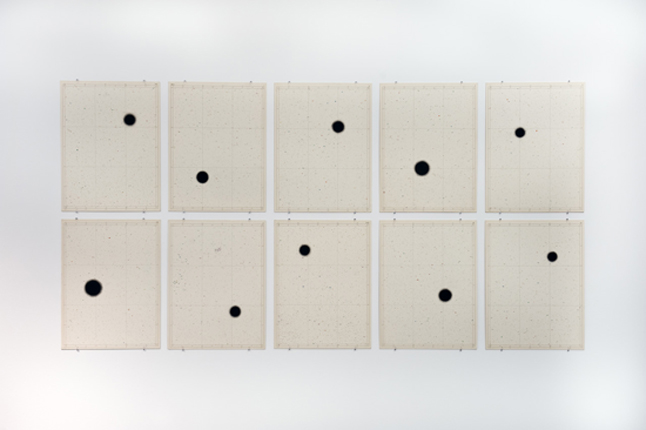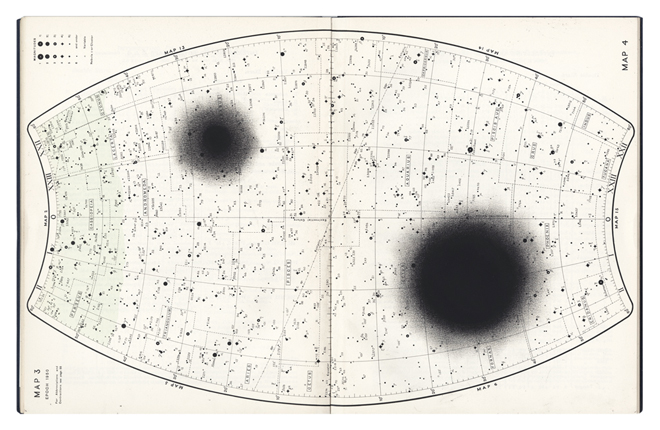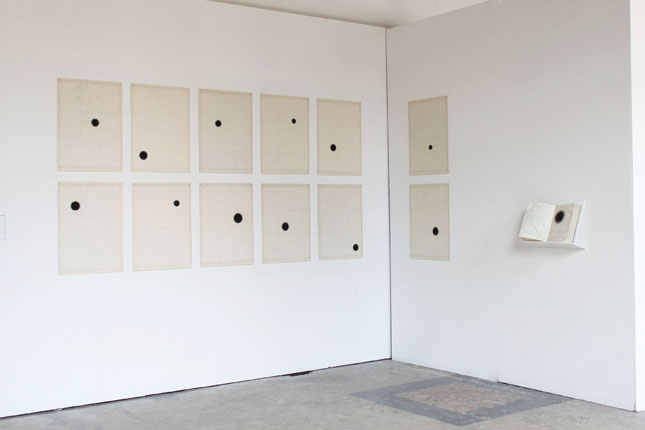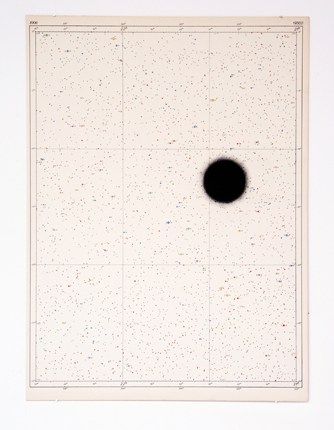Intro
Inspired by the sciences, astronomy, natural phenomena and immense landscapes, Caroline Corbasson frees images from their context and objects from their functionality to extract their essence and redesign their reliefs. The economy of means, the density of the images and the rigorous choice of materials (coal, dust, ink, graphite) that characterize her production convey an aspiration to resist the infinite flows of images that surround us. Her relationship to time and space is as free and singular as the media in which she expresses it. Her drawings, sculptures, videos and installation appear as images that carry a rereading of the world envisaged in an ontological and poetic perspective.
Cosmic impressions
"If I insert myself into the tube, if I let myself fall into the hole whereas I don't know how deep it is, because the hole is as black as darkness or wax, and nothing assures me that there is an end, still less that it is the path to a destination."1
If we consider Caroline Corbasson's work from a panoramic view, a constellation of shadow zones, black holes and rocky cavities emerges from a graphic and orderly universe as points of anchoring in reflection and doubt. Querying the real and its consistency with processes such as wear, alteration or effacement, the artists proposes new territories to explore.
These black surfaces that, initially, alter the vision and use of objects, especially call up mental images to be formed. Drawn with coal, a group of black dots added by the artist on sky maps, in an asynchronous gesture, could suggest possible past or future cosmodramas (Anomalia, 2013). Eclipse (2014), a globe deprived of light from its star, entirely covered by mineral material, invites us to reconsider the familiar object in its structure and materiality. The subtle crossings between the drawing (two dimensions, lightness) and the sculpture (three dimensions, materiality), the document and fiction, crisscross all the artist's work. Between a protective envelope and a sign of thermal disaster, this gray graphite surface also evokes underground fossil resources and volcanic materials. In this sense, the images of craters, mines or a water hole produced by the artist display a dual determination: vertically exploring the world – its different strata – and experimenting with the attraction of the void.
1 Julien Maret, Rengaine, José Corti, 2011, p. 9 and p. 87.
Text excerpt by Lionnel Gras




